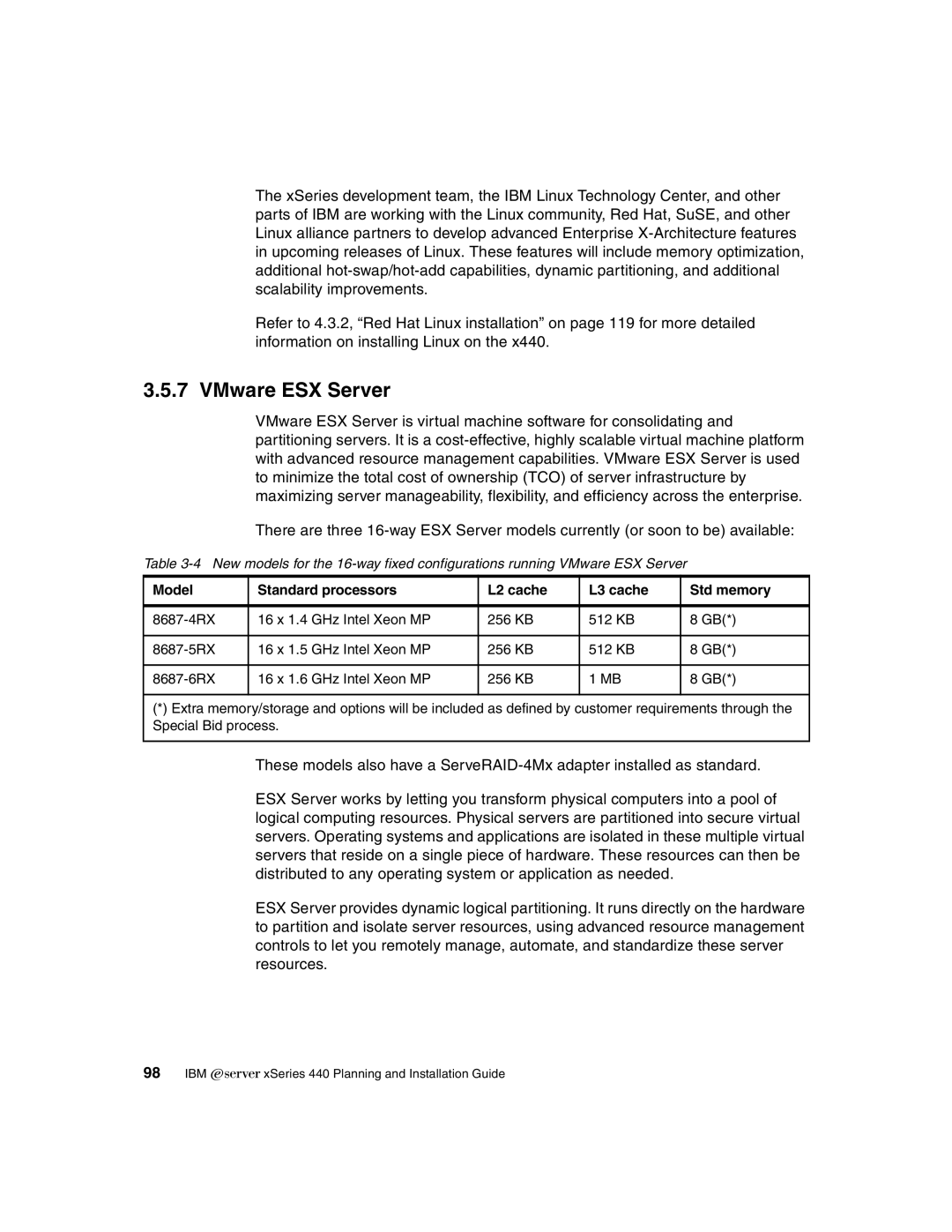
The xSeries development team, the IBM Linux Technology Center, and other parts of IBM are working with the Linux community, Red Hat, SuSE, and other Linux alliance partners to develop advanced Enterprise
Refer to 4.3.2, “Red Hat Linux installation” on page 119 for more detailed information on installing Linux on the x440.
3.5.7 VMware ESX Server
VMware ESX Server is virtual machine software for consolidating and partitioning servers. It is a
There are three
Table
Model | Standard processors | L2 cache | L3 cache | Std memory |
|
|
|
|
|
16 x 1.4 GHz Intel Xeon MP | 256 KB | 512 KB | 8 GB(*) | |
|
|
|
|
|
16 x 1.5 GHz Intel Xeon MP | 256 KB | 512 KB | 8 GB(*) | |
|
|
|
|
|
16 x 1.6 GHz Intel Xeon MP | 256 KB | 1 MB | 8 GB(*) | |
|
|
|
|
|
(*) Extra memory/storage and options will be included as defined by customer requirements through the Special Bid process.
These models also have a
ESX Server works by letting you transform physical computers into a pool of logical computing resources. Physical servers are partitioned into secure virtual servers. Operating systems and applications are isolated in these multiple virtual servers that reside on a single piece of hardware. These resources can then be distributed to any operating system or application as needed.
ESX Server provides dynamic logical partitioning. It runs directly on the hardware to partition and isolate server resources, using advanced resource management controls to let you remotely manage, automate, and standardize these server resources.
